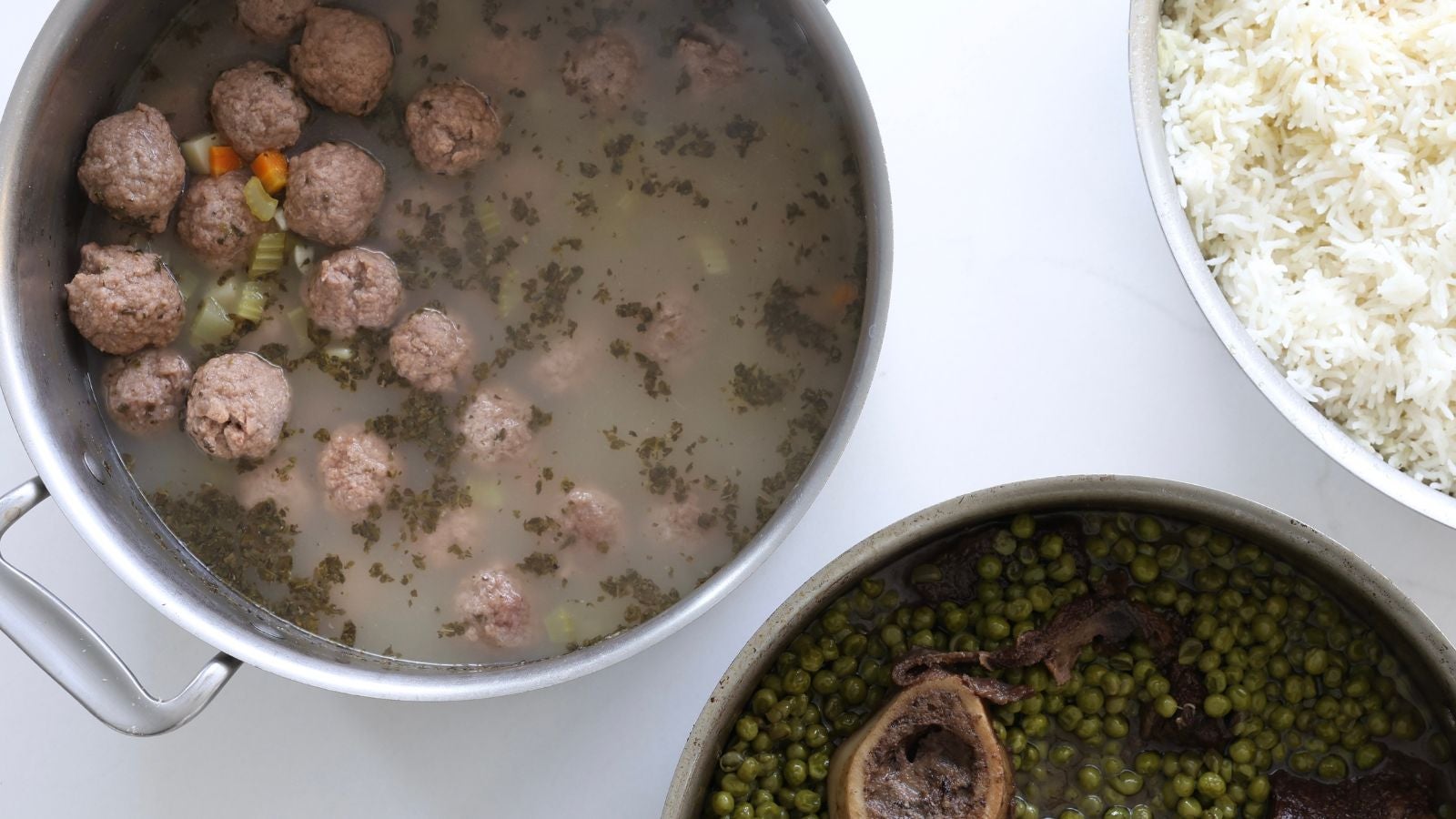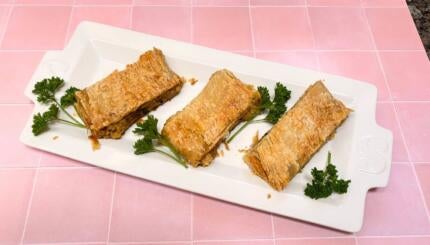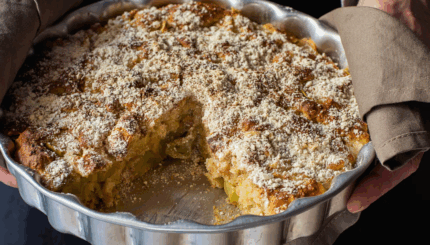“Nobody knows why we eat it every Friday night,” said Tania Shaalo about hamud, the sour lemony broth often served by Syrian Jews as part of their weekly Shabbat dinners. Tania is one of the few people I know who was born and raised in Syria; most people in the Syrian Jewish community, like myself, are third-, fourth- or even fifth-generation American. The fact that she didn’t know how this beloved dish became such a staple, even after consulting with other native Syrian Jews, was intriguing. I made it my mission to find out more.
Hamud means “sour” in Arabic, but it’s also the name of a tangy broth flavored with mint, garlic, chopped celery and kibbeh (stuffed meat and rice dumplings; the name “hamud” is short for “kibbe hamda”).
What I believe makes this dish so popular is the bright garlicky flavor combined with lemon and mint, and of course the hearty kibbeh taking center stage. This burst of flavors, along with its comfort and nostalgia, is why hamud continues to be served on Shabbat tables of Jews descended from the Middle East all over the world. There are as many variations of hamud as there are families in the Syrian, Egyptian, Iraqi and Lebanese Jewish communities who serve it at their tables.
Violet Galapo, who also grew up in Syria, explained that hamud was traditionally served over rice cooked with vermicelli, alongside peas with meat as well as fassoulie (white bean and beef stew). Most families I know continue to serve hamud over rice, some in bowls and others as the centerpiece on their dinner plates. I personally love mine over rice and topped with peas, which I always include at my meal like my grandmothers did.
The Nosher celebrates the traditions and recipes that have brought Jews together for centuries. Donate today to keep The Nosher's stories and recipes accessible to all.
Growing up in Mexico as a Jew of Syrian descent, I ate hamud every week — sometimes even four times a week! While hosting our large family on my father’s side, my grandmother Vida would prepare hamud, rice, peas and fassoulie for a late lunch on Fridays. She used citric acid in her hamud for extra tang and added tomato sauce, oot (tamarind sauce), and chopped potatoes and carrots.
My grandmother Raquel, on my mother’s side, also cooked hamud, rice and peas for every Shabbat dinner. Her hamud recipe consisted of potatoes, homemade dried spearmint and plenty of lime juice. My grandmother Raquel simmered the hamud until the potatoes began to dissolve, which made the broth thicker and more comforting. Whenever I slept over on Friday nights, she would serve me hamud for breakfast the next morning. I loved it so much that she would warm it up again for me for lunch.

What’s fascinating about hamud is that each family’s recipe is passed down from mother to daughter, generation after generation. In my family, my mom and her sisters prepare hamud clear (without tomato sauce or oot), the way my grandmother Raquel and her mother Lela did. My sister, cousins, daughters and I continue to make it the same way, but we all add our personal tweaks. One cousin adds parsley, one omits garlic and I add carrots. My father’s sisters and their children cook red hamud (with tomato sauce and oot) like they learned from my grandmother Vida.
Some women learn to make hamud from their mother-in-law, like Linda Ebani, whose own mother is Moroccan. Linda’s variation includes bone marrow, veal, onions and a very tangy jarred lemon juice.
There are also many differences in ingredients used from one country to another. According to Poopa Dweck, author of “Aromas of Aleppo,” women in Syria used beef broth, which made their hamud more nutritious. In Mexico, most people use lime and spearmint, lending a very tangy and bright flavor. In the United States, most people use lemon and mint for a more subtle flavor. At Azura, in Jerusalem’s Mahane Yehuda market, one can taste the Iraqi influence on hamud. The restaurant serves a version called “hamusta” made with squash, celery and Swiss chard, as well as another variation made with beets, which lends the broth a very deep red color.
In “The Book of Jewish Food,” Claudia Roden adds zucchini, artichoke hearts and ground almonds or pinenuts, while in “The New Book of Middle Eastern Food,” she adds chicken carcass and giblets. In “Coleccion Privada de un Gourmet,” Flora Cohen shares multiple hamud recipes: In one, she uses shredded chicken breasts along with the stock in which they were cooked and chicken flavor bouillon cubes, another includes tomato sauce and leeks, and a third recipe calls for beef shank, Swiss chard and scallions. Even more variations can be found in books such as “Kosher Syrian Cooking” by Grace Sasson and “A Fistful of Lentils” by Jennifer Felicia Abadi.
If you’ve tried this wonderful dish, you, like me, are lucky. And if you have not, go ahead and prepare it for your next Shabbat meal and become part of a longstanding tradition. Whether you stick to the basic version or add your own twist to it, I assure you that you are in for a delicious treat.
This article was produced as part of The Nosher’s Jewish Food Fellows Program, which aims to diversify the voices telling Jewish food stories in media spaces.



